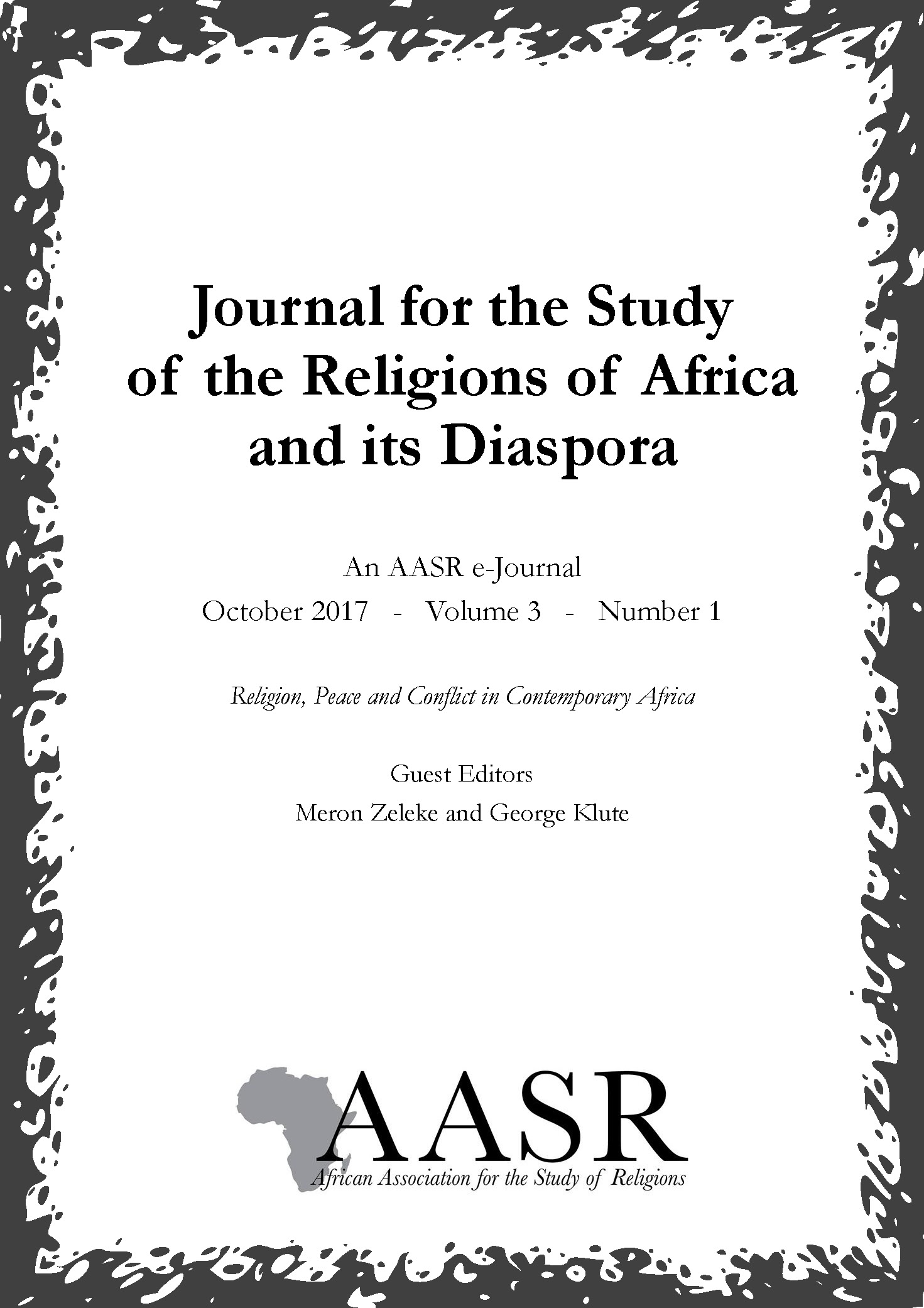Yäsäw ᵓəǧ. Aggressive magic in Addis Ababa Micro-conflicts in a changing society
Main Article Content
Keywords
Ethiopian Orthodox Church, Magic, Medical Pluralism, Development, Spirit Possession, Holy Water Healing
Abstract
Addis Ababa has been going through great changes during the last fifteen years, both structurally and socially. For some this creates an environment of opportunities, but for most people more social, economic and spiritual insecurity. In this time informants at centres of holy water healing in the Ethiopian Orthodox Church talk about an increase in aggressive magic, or in Amharic: yäsäw ᵓəǧ. That magic and witchcraft is rife during times of change has been discussed in research in other African cultures. In Addis Ababa, where this study has been carried out, the situation of aggressive magic is different. The Christian context influences the choices people make, and the Ethiopian Orthodox Church offers a solution to the misery and suffering of the afflicted which is: holy water healing.
Article Metrics Graph
References
Aspen, Harald. 2001. Amhara traditions of knowledge: spirit mediums and their clients. Wiesbaden: Harrassowitz.
Berhanu, Zena. 2010. "Holy Water as an Intervention for HIV/AIDS in Ethiopia." Journal of HIV/AIDS & Social Services 9 (3):240-260.https://doi.org/10.1080/15381501.2010.502802
Bishaw, Makonnen. 1991. "Promoting traditional medicine in Ethiopia: a brief historical review of government policy." Social Science & Medicine 33 (2):193-200. https://doi.org/10.1016/0277-9536(91)90180-K
Bowie, Fiona. 2006. The anthropology of religion: An introduction. 2nd ed. ed. Oxford: Blackwell.
Comaroff, Jean, and John L Comaroff. 1993. Modernity and its malcontents: Ritual and power in postcolonial Africa: Chicago: University of Chicago Press.
Evans-Pritchard, E. E. 1937. Witchcraft, oracles and magic among the Azande. Oxford: Clarendon Press.
Freeman, Dena, and Pankhurst, Alula. 2003. Peripheral people: the excluded minorities of Ethiopia: Lawrenceville, Asmara: The Red Sea Press.
Geschiere, Peter. 1997. The modernity of witchcraft: politics and the occult postcolonial Africa, Sorcellerie et politique en Afrique. Charlottesville, Va: University Press of Virginia.
Hannig, Anita. 2013. "The pure and the pious: corporeality, flow, and transgression in Ethiopian Orthodox Christianity." Journal of Religion in Africa 43 (3):297-328. https://doi.org/10.1163/15700666-12341254
Haram, Liv, and Christian Bawa Yamba. 2009. Dealing with uncertainty in contemporary African lives. Uppsala: Nordiska Afrikainstitutet.
Hermann, J. 2012. "Christian holy water sites in Ethiopia and AIDS: tensions between the sacred and profane dynamics." Social Compass 59 (3):357-366. https://doi.org/10.1177/0037768612449720
Kane, Thomas Leiper. 1990. Amharic-English dictionary: 2: Ñ-P. Vol. 2. Wiesbaden: Harrassowitz.
Levene, Dan, and Siam Bhayro. 2005. "" Bring to the Gates... upon a good smell and upon good fragrances:" An Aramaic Incantation Bowl for Success in Business." Archivfür Orientforschung: 242-246.
Levene, Dan, David IW Phillips, and Shitaye Alemu. 2016. "Medical traditions and chronic disease in Ethiopia: a story of wax and gold?" Tropical Doctor 46 (3):122-125. https://doi.org/10.1177/0049475516655060
Moges, Shitila. 2006. Evil spirit illnesses' mystery and healing by Holy Water. Addis Ababa: Private.
Moller, Lars Christian. 2015. Ethiopia's great run: the growth acceleration and how to pace it. Washington, D.C.: World Bank Group.
Moore, Henrietta L., and Todd Sanders. 2001. Magical interpretations, material realities: modernity, witchcraft and the occult in postcolonial Africa. London: Routledge.
Otto, Astrid. 2003. "Das kulturspezifische Wissen und seine Anwendung im Medizinsystem der Däbtära in Nordäthiopien (Gondar)." Lit Verlag Münster.
Pankhurst, Richard. 1990. An introduction to the medical history of Ethiopia. Trenton, N.J: Red Sea Press.
Reminick, Ronald A. 1974. "The evil eye belief among the Amhara of Ethiopia." Ethnology 13.3 : 279-291.https://doi.org/10.2307/3773168
Salamon, Hagar. 1999. The Hyena People: Ethiopian Jews in Christian Ethiopia. Vol. 13: Univ of California Press.https://doi.org/10.1525/9780520923010
Schirripa, Pino. 2010. Health System, Sickness and Social Suffering in Mekelle (Tigray-Ethiopia). Vol. 1: LIT Verlag Münster.
Shelemay, Kay Kaufman. 1992. "The musician and transmission of religious tradition: The multiple roles of the Ethiopian Däbtära." Journal of Religion in Africa: 242-260. https://doi.org/10.1163/157006692X00167
Slikkerveer, Leendert Jan. 1982. "Rural health development in Ethiopia: Problems of utilization of traditional healers." Social Science & Medicine 16 (21):1859-1872. https://doi.org/10.1016/0277-9536(82)90447-6
Tamrat, Taddesse. 1972. "Church and state in Ethiopia, 1270-1527." Clarendon Press Uhlig, Siegbert. 2003. Encyclopaedia Aethiopica: Vol. 1: Harrassowitz Verlag.
Westerlund, David. 2006. "African indigenous religions and disease causation: From spiritual beings to living humans." Leiden: Brill.https://doi.org/10.1163/9789047407690
Wondwosen, Teshome. 2006. Medical Pluralism in Ethiopia. Aachen: Shaker Verlag.
Young, Allan. 1975. "Magic as a" quasi-profession": the organization of magic and magical healing among Amhara." Ethnology 14.3: 245-265.https://doi.org/10.2307/3773255
Young, Allan Louis. 1970. "Medical beliefs and practices of Begemder Amhara." University of Pennsylvania.


